Roy Wenzl in Wichita, Kansas
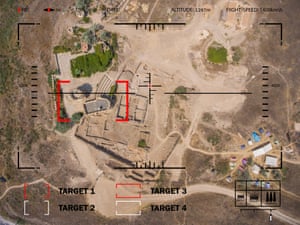 In a dimly lit room at McConnell air force base in south central Kansas, analysts from a national guard intelligence reconnaissance surveillance group watch live drone surveillance video coming from war zones in the Middle East. During combat, the analysts become part of a “kill chain” – analyzing live drone video, then communicating what they see – in instant-message chat with jet fighter pilots, operators of armed Predator and Reaper drones, and ground troops. They carry out drone warfare while sitting thousands of miles from battlefields. They don’t fly the drones and don’t fire the missiles. They video-stalk enemy combatants, and tell warfighters what they see. The work, they say, helps kill terrorists, including from Isis. the group does this work in the middle of America, at an air base surrounded by flat cow pastures and soybean fields. The 184th Intelligence Wing of the Kansas air national guard, started this work about 2002. Until last year, most people in Kansas knew nothing about their role in drone warfare.
In a dimly lit room at McConnell air force base in south central Kansas, analysts from a national guard intelligence reconnaissance surveillance group watch live drone surveillance video coming from war zones in the Middle East. During combat, the analysts become part of a “kill chain” – analyzing live drone video, then communicating what they see – in instant-message chat with jet fighter pilots, operators of armed Predator and Reaper drones, and ground troops. They carry out drone warfare while sitting thousands of miles from battlefields. They don’t fly the drones and don’t fire the missiles. They video-stalk enemy combatants, and tell warfighters what they see. The work, they say, helps kill terrorists, including from Isis. the group does this work in the middle of America, at an air base surrounded by flat cow pastures and soybean fields. The 184th Intelligence Wing of the Kansas air national guard, started this work about 2002. Until last year, most people in Kansas knew nothing about their role in drone warfare.
The work is top secret.They say that they see things in those drone images that no one wants to see. Sometimes, it’s terrorists beheading civilians. Sometimes it’s civilians dying accidentally in missions that the Kansans help coordinate.
They agonize over those deaths. The most frequently heard phrase in drone combat, one airman says, is: “Don’t push the button.”
“You see [enemy combatants] kiss their kids goodbye, and kiss their wives goodbye, and then they walk down the street,” said a squadron chief master sergeant. “As soon as they get over that hill, the missile is released.”
The Americans wait to fire, he says, “because we don’t want the family to see it”.
Analysts working in the top-secret SCIF room (Sensitive Compartmented Information Facility) at McConnell air force base in Wichita. Photograph: Kansas Air National Guard's 184th Intelligence Wing
‘Worst year for civilians’
Drone war critics describe it as depersonalized killing, done with collateral costs unknown. Those critics, including those studying civilian deaths on the ground in the Middle East, say that actual deaths exceed by thousands the total number admitted to by the US and its coalition allies. In a statement on their website, Airwars.org said: “By any measure, 2017 has been the worst year for civilians in the fight against Isis, as battles moved deep into Iraqi and Syrian cities.” Despite the coalition’s insistence that it was waging “the most precise war in history”, Airwars estimates that at least 3,875 non-combatants were killed by coalition actions during 2017 to November.
In Afghanistan, Pakistan, Somalia and Yemen, nearly 10,000 people are estimated to have died in 4,413 US strikes since about 2002, according to the watchdog Bureau of Investigative Journalism. The bureau estimates that as many as 1,488 were civilians, including up to 331 children.
Reporters for the New York Times Magazine, in a November story called The Uncounted, wrote that they had spent 18 months personally visiting 150 coalition strike sites in Iraq. They concluded that one in five strikes kills civilians – a toll they say is 31 times higher than military estimates.
What the Kansas airmen describe is another story. The way they see it, they save civilians and soldiers. They fight terrorists who want to come here.
Enemy deaths don’t bother them. “The terrorists involved, they all made choices,” an officer who identifies himself as Maj Jeffrey says. “We protect the guys and gals on the ground.”
But civilian deaths weigh on them. “It sounds callous to say that it’s collateral damage,” says Col David Weishaar, the 184th’s commander. “It’s human life. We’re doing what we can to mitigate it.”
Three of Weishaar’s airmen, on a recent Friday, file into a bare, concrete air base conference room and gather around a small round table. They state ranks and first names: Chief Master Sgt Don, Maj Jeffrey, Staff Sgt James.
(The airmen don’t want their full names published for fear of retribution against their families.)
They spend the next hour describing drone warfare.
“The technology we use is just insane, it’s so good,” Jeffrey begins. Drone commanders in the Middle East can place an eye in the sky to watch enemy combatants – for months, if necessary, Jeffrey says.
They park drones in the air above surveillance targets and program them to “loiter”. Many drones can loiter 14 hours fully armed. The operators replace them with a refueled drone when the previous drone runs low.
Boys gather near the wreckage of car destroyed by a US drone air strike targeting suspected al-Qaida militants in the south-eastern Yemeni province of Shabwa.
Back in Kansas, in the SCIF, (Sensitive Compartmented Intelligence Facility), members of Col Brad Hilbert’s group watch dozens of screens. One eight-hour shift will watch multiple targets, then hand off surveillance to the next shift. Multiple missions run simultaneously.
While enemy combatants walk around carrying weapons, the group studies their movements. They can watch one person, or one building, or one small neighborhood. The drones loiter high and unseen, giving clear, hi-tech visuals.
“I sometimes say we’re fighting with laser beams against people who beat each other to death with sticks,” Jeffrey says.
Most of what they watch is tedious. “They will sometimes watch one pile of sand every day for a month,” their chaplain says.
But sometimes, they see that an enemy is about to attack US troops. The commanders decide to “neutralize” him. When commanders order attacks, the Kansans become one link in a kill chain, which can include armed Reaper and Predator drone operators, fighter pilots, ground artillery commanders – and commanders with authority to approve or deny strikes.
ISR analysts undergo a year of training before they work. The top priority, Don says: never fire when civilians might be endangered. None of the airmen wanted to describe specifics of combat they have taken part in.
But one of the 184th’s past mission commanders, Maj Janell Blaufuss, earned a combat citation that the unit released publicly this year.
The citation gives a vivid description of ISR work:
Between 2009 and 2012, Blaufuss took part in 425 combat missions in Iraq, Afghanistan and elsewhere. She helped kill senior Taliban fighters in Afghanistan, insurgent fighters in Iraq, and others in other countries. She helped neutralize “92 high value individuals, found 398 improvised explosive devices – saving lives.”
Don’t push the button
During a 2011 Afghanistan mission, Hilbert’s analysts stopped a strike that would have killed civilians. That’s one story Col Joe Jabara wishes would make the news more.
The 2011 mission began with some anxiety, Hilbert says. US troops and aircraft were getting shot at daily.
“Our [aircraft] had received fire from a triple-A [anti-aircraft artillery] piece, so we were out there looking hard for it,” says Lt Col Jeff, another 184th squadron commander. Then, a drone camera showed what commanders overseas felt sure was a concealed killer.
“It was an irrigation pipe, with a tent structure over the pipe,” Hilbert says. “The operators of the aircraft thought it was triple-A. It did resemble a triple-A piece.
“But we looked at it. And looked at it.
“And we said – hold on.
“There was a fervor to find a potential threat,” Hilbert says. “But our people were emphatic: ‘No, it’s not.’
Commanders held fire.
“The next day, the ground forces were able to verify that it was a hut, with people living in it,” Hilbert says.
“They found a cookstove, and not far from the stove was a little baby laying there.”
But sometimes they don’t save civilians.
A Yemeni man looks at graffiti showing a US drone after al-Qaida in Yemen confirmed the death of its leader in US drone strike, in Sana’a, Yemen, 16 June 2015. Photograph: Yahya Arhab/EPA
‘That’s not really counter-terrorism’
Airwars.org estimates that drones killed nearly 6,000 civilians during US-led coalition strikes in Iraq and Syria.
A leading analyst of drone warfare is Micah Zenko, an author and former analyst for the Council on Foreign Relations. He numbers dozens of military officers among his sources, and has written about drone successes. He has written that drone warfare has crippled the ability of al-Qaida and other groups to carry out international terrorism.
But he has also written about failures. The military severely underreports civilian deaths, he says.
Not only that, but according to him, drone strikes raise other questions: they turn populations against America. Most combatants killed are low level.
Strategically, Zenko said in an interview, US leaders are not asking themselves crucial questions:
“How do you tie in those tactical operations with the broader campaign in the Middle East?
“The military says we’re using drones to accomplish either force protection of our troops on the ground, or to conduct counter-terrorism,” he said. “But in Afghanistan, most of our drone strikes protect Afghan forces on the ground. In Somalia, we are killing people who are a threat to Somali forces.
“Why is the CIA and JSOC [the USmilitary’s Joint Special Operations Command] functioning as the air force of the Somali government?” Zenko asked. “That’s not really counter-terrorism.”
Zenko says the US should end so-called “signature strikes”, (the type of strike often coordinated by the Kansas video analysts). Those strikes target unidentified militants based on their behavior patterns and personal networks. Zenko argues that the military should “limit targeted killings to a limited number of specific terrorists with transnational ambitions”.
Besides Zenko, some thinkers around the world say it’s not just casualties we need to worry about. As drone warfare technology proliferates, physicist Stephen Hawking and inventor Elon Musk said this month that we’re heading into the dangers of robotic warfare, and an artificial intelligence arms race.
Analysts working in the top-secret SCIF room at McConnell air force base in Wichita. Photograph: Courtesy photos from the Kansas Air National Guard's 184th Intelligence Wing
‘It’s human life’
The three airmen around the table all say they have worked missions where civilians died.
“It may not be the right answer, the politically correct answer [to say that the airmen have done that],” Jeffrey says. “But the rates at which it’s happening now, compared with wars past, is drastically reduced.”
“It sounds callous to say that it’s collateral damage,” says Weishaar, the 184th’s commander. “It’s human life. We’re doing what we can to mitigate it.”
They hold their fire much more than they fire, Jeffrey says. But being right all the time is impossible, Don says. “I’ll give you a little story …”
One day, two years ago, he sat in Wichita, helping supervise a frustrating mission. He won’t name which country.
“These two guys [enemy combatants] … were driving in this little Yugo – getting out, setting up their mortar, shooting it off at [US] marines. And we were in the middle of a big city.
“‘Permission to engage?’ ‘Denied!’
“And again: ‘Denied.’
“And then they’d drive another couple of blocks.
“And shoot off more mortars.
“They did this three or four times.
The drone commanders refused to fire.
“The decision was: the marines can handle the incoming,” Don says. “We are not going to shoot at this car – that deserved it – in the middle of this city.
“So, we wait.
“And they go off into the middle of nowhere … and we are watching.
“There’s no signs of life – all indications are, there is nothing [there] but these two dudes.
“Nothing!
“They are sitting in the car. Slapping hands – how happy they were to be terrorists. And got away with it.
“[But now] they are hot.
“Missile release!
“And …
“Eight seconds off the target, a family comes outside the building to meet the guys at the car.”
Don saw the flash of the missile explosion.
“Nothing could have stopped that,” he says.
Possible post-traumatic stress
They’ve all watched mass beheadings, including many by Isis terrorists.
“The terrorists sometimes force or invite the neighborhood to come out and watch,” Don says. He and James and Jeffrey and the rest of the 184th watch these mass murders, feeling helpless. “It doesn’t happen frequently,” James says. “But I wouldn’t say it’s rare.”
The 184th’s chaplain (who asked that he be called “the chaplain” for this story), is one of the few military chaplains with a top-secret security clearance. He watches the combat videos with the airmen, sitting alongside.
He is worried enough about possible post-traumatic stress among his flock that that he recently acquired the ISR group’s therapy dog, and has set up marriage retreat weekends to help keep families from breaking up.
Group members are getting divorced a lot, he says. Some of them sometimes do “bad things outside the gate” – domestic abuse, drunk driving. He thinks some such mistakes might be related to watching video trauma, of beheadings – and combat.
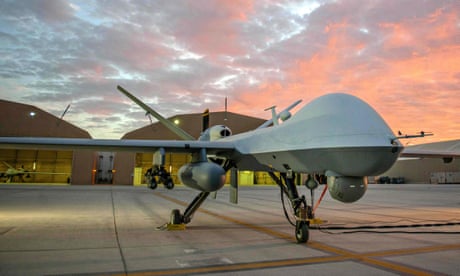
Though they at first claim that killing enemies does not bother them, the three men around the table later say the truth is more complicated.
James says he knows enemy combatants “had a life. They had a family. They were probably a vital part of their small community. And because of choices that they made, they’re now gone. I reflect a lot on it.”
Don: “The part that bothers me: Mom and Dad may not know what their [son] Little Johnny is doing,” Don says. “Little Johnny is the logistics facilitator for a homemade explosives facility. Or maybe he’s a money runner. Or he’s extorting taxes from a poor farmer to subsidize a terror organization.
“So when I kill Little Johnny – zero remorse. But I feel bad for Mr and Mrs Johnny. They will never see him again. And if we did it right, they have no idea where he went.”
Since you’re here …
… we have a small favour to ask. More people are reading the Guardian than ever but advertising revenues across the media are falling fast. And unlike many news organisations, we haven’t put up a paywall – we want to keep our journalism as open as we can. So you can see why we need to ask for your help. The Guardian’s independent, investigative journalim takes a lot of time, money and hard work to produce. But we do it because we believe our perspective matters – because it might well be your perspective, too.
I appreciate there not being a paywall: it is more democratic for the media to be available for all and not a commodity to be purchased by a few. I’m happy to make a contribution so others with less means still have access to information.Thomasine F-R.
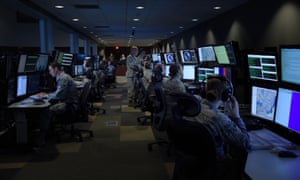
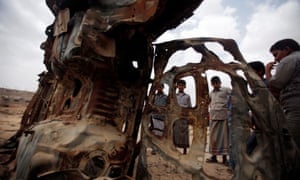
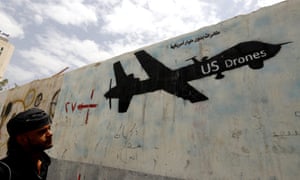
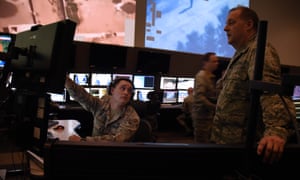
No comments:
Post a Comment